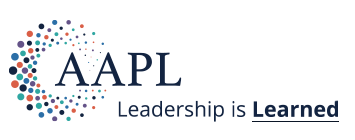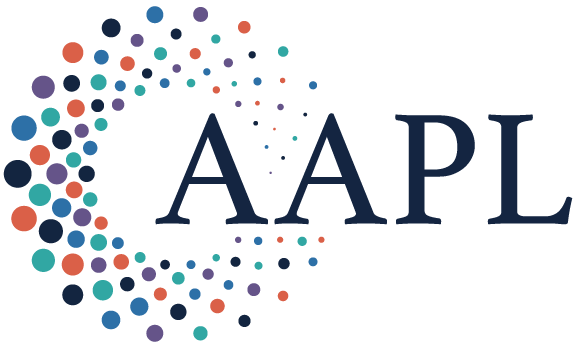The handshake has a long tradition as a way of showing respect to another individual and is often accompanied by other nonverbal forms of connection, such as eye contact and a smile.(2) The action is considered by many as a way for providers to build trust with their patients,(3) yet one study reported that only 50% of patients wanted their physician to shake their hand during the first encounter.(4) According to the study, nonverbal communication, such as smiling and making direct eye contact, far outweighed the importance of the handshake.
Two of the most common illnesses in humans, the norovirus (a common virus that causes diarrheal infections) and the rhinovirus (the common cold), are easily transmitted when we touch our hands to our mouths and faces and then touch others or surfaces. Washing hands is a great way to prevent these common viral diseases from spreading from person to person.
For some people, it is a relief to not worry about germs exchanged through handshakes. But when we don’t shake hands, we miss out on crucial communication signals from others.
CONSIDER THE ALTERNATIVES
What could we do instead of shaking hands? Anthony Fauci, MD, says he has replaced handshaking with a slight bow, which some people may find awkward. Fist and elbow bumps do not elicit the same emotional response as a handshake.(5)
How about contactless greetings? Two alternative methods to the traditional handshake are the stop, drop, and nod or the grasp and greet.(6) The “stop, drop, and nod” occurs with your hands behind your back, so there is no hand contact. The “grasp and greet” is a variation with your hands clasped in the front, near your heart. These contactless greetings are delivered with a big smile. The message in both greetings is clear: nice to see you, but let’s not touch.
Maybe the “rule of thumb” or the “rule of hand” should be to limit handshakes to special occasions: the co-worker you haven’t seen in months, the brother who just got a promotion, or the attorney who successfully defended you in a malpractice case. Proceed with a quick three-pump and maintain eye contact — then wash your hands.
DOCTORS, PATIENTS, AND PROTOCOL
The rituals that are considered “required” in our Western culture can disrupt the flow of the doctor-patient encounter. We know from our training that handwashing reduces hospital-acquired infections. Therefore, handwashing should be integral to every patient visit.(7) But what do we do first? Wash or shake hands? A handshake offered by a patient should probably be accepted and reciprocated to help build trust and rapport.
The relationship between physicians and their patients begins when the physician, after knocking, enters the exam or hospital room. After entering, they should sanitize their hands with hand sanitizer or by handwashing and introduce themselves to the patient, stating their name and role, such as physician, medical assistant, nurse, or physician assistant in the practice.
Patients expect their healthcare providers to wash their hands and are often reassured when they see their providers wash their hands. In fact, some practitioners announce that they are going to wash their hands to make the act explicit.
Physicians who wash their hands must negotiate one of three options:
Wash their hands during their introduction, requiring them to turn their back to the patient and talk to them simultaneously.
Introduce themselves to the patient before washing their hands, forgoing the handshake to reduce transmission of infection.
Enter the room and ignore the patient as they wash their hands, then introduce themselves with a handshake after washing their hands.
In all three of these options, handwashing interrupts the initial greeting.
Using hand sanitizer avoids having to turn your back to the patient but adds the awkward component of rubbing the hands dry in silence or while trying to introduce themselves, with or without eye contact.
Suppose a patient offers their hand before the provider’s hands are dry. In that case, the provider must negotiate whether to decline the handshake out of embarrassment or shake hands with the patient and apologize for having wet hands. A short comment might be, “Please let me dry my hands first,” and then proceed with the handshake.
While handwashing does reduce the transmission of infection from physician to patient, it does not necessarily reduce transmission from patient to physician and to other patients.(2) It could be argued that patients should be educated on the importance of hand hygiene as a means to reduce rates of infection, at least in outpatient settings.(8)
THE FINE ART OF SHAKING HANDS
Suppose nonverbal communication such as eye contact, body positioning posture, and smiling are confidently and gracefully used in place of a handshake. In that case, no explanation for the lack of a handshake will likely be needed. However, concerted efforts may be necessary to educate the general community about the reasons for this change in practice.
Handwashing before the physical exam is still necessary, but rapport will have been established by this time, and a pause for handwashing would unlikely be a communication barrier. As an alternative to the introductory handshake, a handshake at the end of an encounter may carry a deeper meaning of gratitude and respect.(9-11)
References
Pittet D, Allegranzi B, Sax H, Dharan S, Pessoa-Silva CL, et al. Evidence-based Model for Hand Transmission During Patient Care and the Role of Improved Practices. Lancet Infect Dis. 2006;6(10): 641–652.
Given LI. The Bacterial Significance of the Handshake. Amer J Nurs. 1929;29(3):254. https://doi.org/10.2307/3408961 .
Griffith CH, Wilson JF, Langer S, Haist SA. House Staff Nonverbal Communication Skills and Standardized Patient Satisfaction. J Gen Intern Med. 2003;18(3):70–174. https://doi.org/10.1046/j.1525-1497.2003.10506.x .
Limon D, Perry S, Granot T, Gordon N, et al. ReCAP: Perspectives of Patients, Caregivers, and Medical Staff on Greetings in Oncology Practice: A Prospective Survey. J Oncol Prac. 2015;12(2):170–171. https://doi.org/10.1200/JOP.2015.006049 .
Muyangata J. A Redefining of Etiquette and Grooming. Intl J Res Innov in Soc Sci. 2023;7(3):548–569.
Mykameier. Instagram. https://www.instagram.com/p/B9j8MDoFioY/
Pittet D, Boyce JM. Hand Hygiene and Patient Care: Pursuing the Semmelweis Legacy. Lancet Infect Dis. 2001;1:9–20. https://doi.org/10.1016/S1473-3099(09)70295-6 .
Haverstick S, Goodrich C, Freeman R, James S, et al. Patients’ Hand Washing and Reducing Hospital-Acquired Infection. Crit Care Nurse. 2017;37(3):e1–e8. https://doi.org/10.4037/ccn2017694 .
Jenkins M. The Meaning of the Handshake Towards the End of the Consultation. Br J Gen Pract. 2007;57(537):324.
Griffin S, Kinmonth A, Veltman MWM, Gillard S, Grant J, Stewart M. Effect on Health-Related Outcomes of Interventions to Alter the Interaction Between Patients and Practitioners: A Systematic Review of Trials. Ann Fam Med. 2004;2(6):595–608. https://doi.org/10.1370/afm.142 .
Fine L, Rajput V. The Smile Is Stronger Than the Handshake. MedEdPublish (2016). 2020;9:68. https://doi.org/10.15694/mep.2020.000068.1 .

